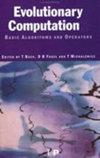High-Dimensional Unbalanced Binary Classification by Genetic Programming with Multi-Criterion Fitness Evaluation and Selection
IF 3.4
2区 计算机科学
Q2 COMPUTER SCIENCE, ARTIFICIAL INTELLIGENCE
引用次数: 4
Abstract
High-dimensional unbalanced classification is challenging because of the joint effects of high dimensionality and class imbalance. Genetic programming (GP) has the potential benefits for use in high-dimensional classification due to its built-in capability to select informative features. However, once data are not evenly distributed, GP tends to develop biased classifiers which achieve a high accuracy on the majority class but a low accuracy on the minority class. Unfortunately, the minority class is often at least as important as the majority class. It is of importance to investigate how GP can be effectively utilized for high-dimensional unbalanced classification. In this article, to address the performance bias issue of GP, a new two-criterion fitness function is developed, which considers two criteria, that is, the approximation of area under the curve (AUC) and the classification clarity (i.e., how well a program can separate two classes). The obtained values on the two criteria are combined in pairs, instead of summing them together. Furthermore, this article designs a three-criterion tournament selection to effectively identify and select good programs to be used by genetic operators for generating offspring during the evolutionary learning process. The experimental results show that the proposed method achieves better classification performance than other compared methods.基于遗传规划的高维非平衡二值分类多准则适合度评价与选择
由于高维和类不平衡的共同作用,高维不平衡分类具有挑战性。遗传程序设计(GP)由于其内置的选择信息特征的能力,在高维分类中具有潜在的优势。然而,一旦数据不均匀分布,GP倾向于开发有偏差的分类器,其在多数类上实现高精度,但在少数类上实现低精度。不幸的是,少数阶级往往至少和多数阶级一样重要。研究如何有效地利用GP进行高维不平衡分类具有重要意义。在本文中,为了解决GP的性能偏差问题,开发了一个新的双标准适应度函数,该函数考虑了两个标准,即曲线下面积(AUC)的近似值和分类清晰度(即程序可以在多大程度上区分两类)。根据这两个标准获得的值成对组合,而不是将它们相加。此外,本文设计了一个三标准锦标赛选择,以有效地识别和选择好的程序,供遗传算子在进化学习过程中用于生成后代。实验结果表明,与其他比较方法相比,该方法具有更好的分类性能。
本文章由计算机程序翻译,如有差异,请以英文原文为准。
求助全文
约1分钟内获得全文
求助全文
来源期刊

Evolutionary Computation
工程技术-计算机:理论方法
CiteScore
6.40
自引率
1.50%
发文量
20
审稿时长
3 months
期刊介绍:
Evolutionary Computation is a leading journal in its field. It provides an international forum for facilitating and enhancing the exchange of information among researchers involved in both the theoretical and practical aspects of computational systems drawing their inspiration from nature, with particular emphasis on evolutionary models of computation such as genetic algorithms, evolutionary strategies, classifier systems, evolutionary programming, and genetic programming. It welcomes articles from related fields such as swarm intelligence (e.g. Ant Colony Optimization and Particle Swarm Optimization), and other nature-inspired computation paradigms (e.g. Artificial Immune Systems). As well as publishing articles describing theoretical and/or experimental work, the journal also welcomes application-focused papers describing breakthrough results in an application domain or methodological papers where the specificities of the real-world problem led to significant algorithmic improvements that could possibly be generalized to other areas.
 求助内容:
求助内容: 应助结果提醒方式:
应助结果提醒方式:


